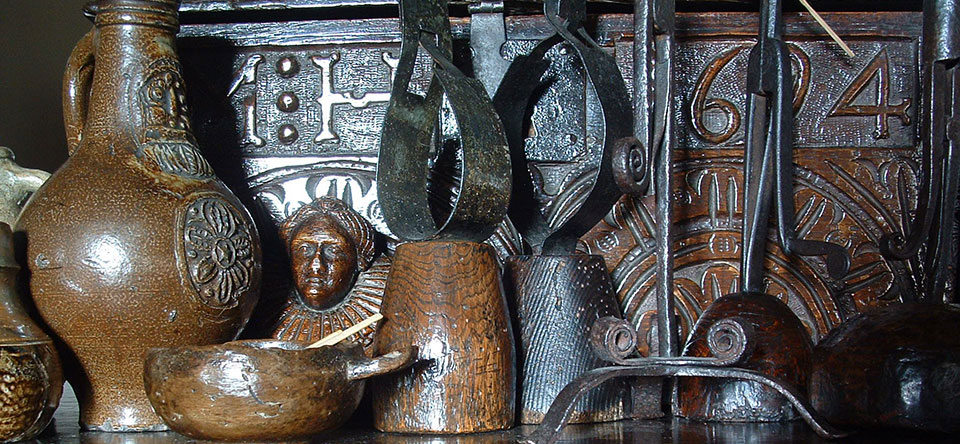
With the introduction of the Candle Tax in 1709, rushes became the cheaper alternative for a light source.
Pith from the common field rushes were gathered and dipped in animal fat and burnt in the jaws of a Rushlight or Nip.
The following extract taken from Studies of Nidderdale (1867 - 1872) Lucus, almost 100 years later than the ‘Gilbert White’ version – most often quoted.
‘The seaves (rushes - Lakeland spelling, sieves) were gathered at certain places on the moors in autumn or late summer. They chose the largest and strongest from which they stripped off the outer skin to enable tissues to imbibe the melted fat into which they were dipped’.
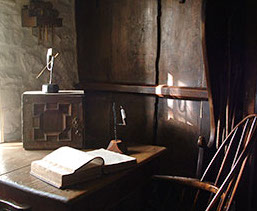
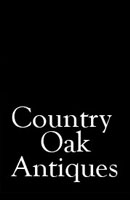
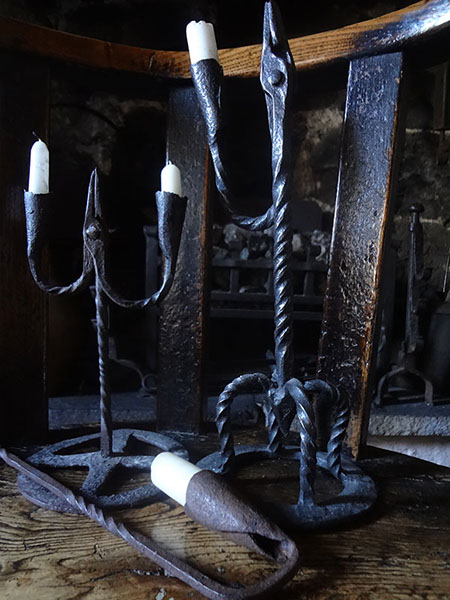
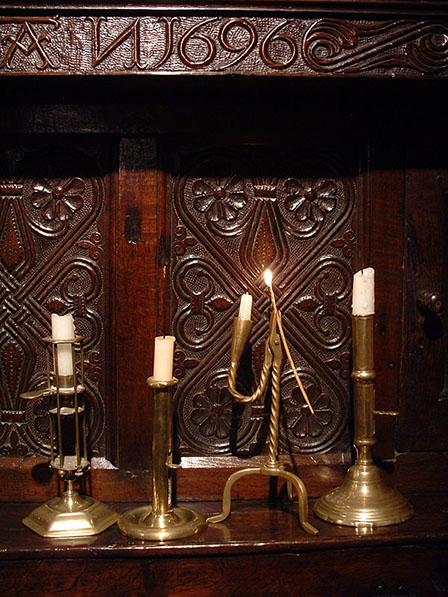
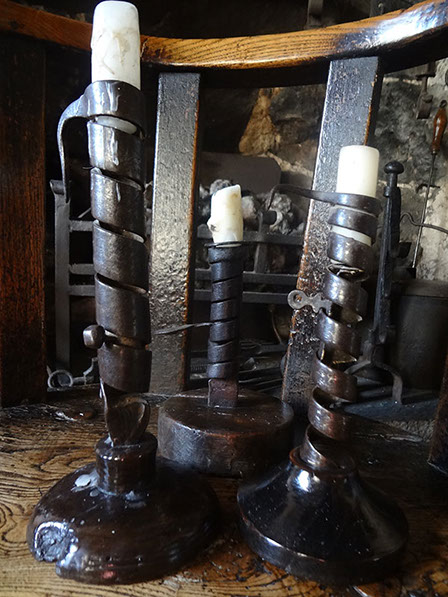
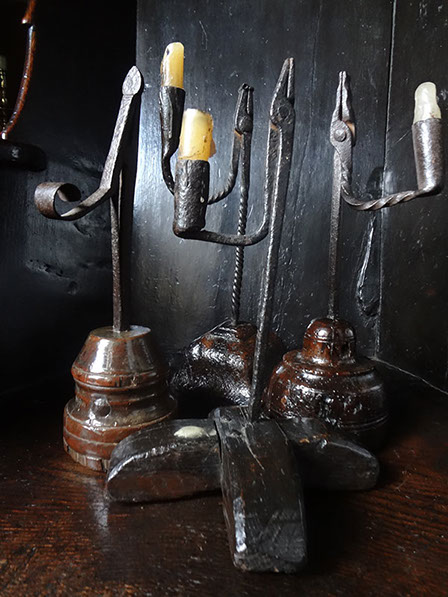
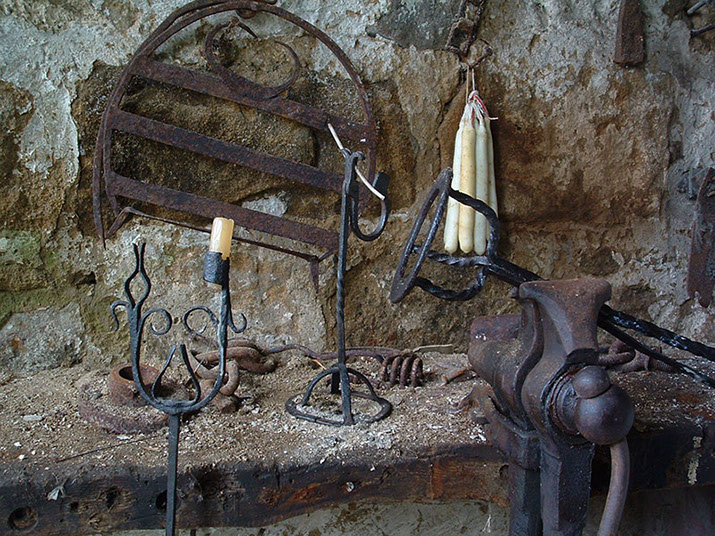
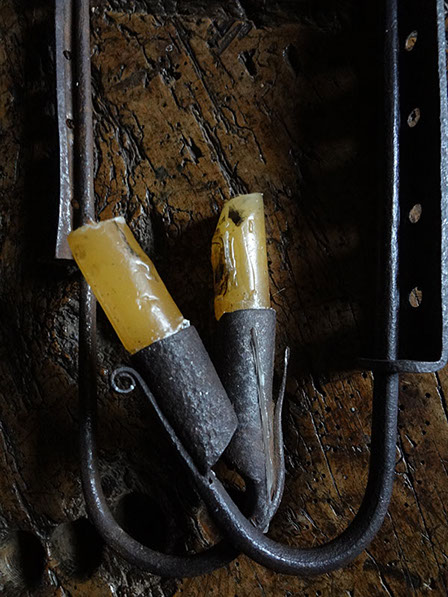
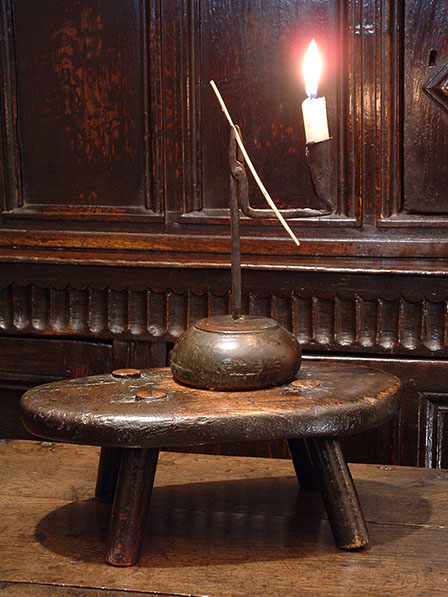
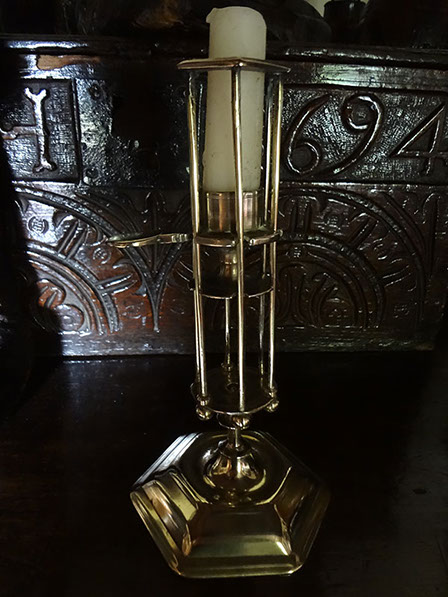
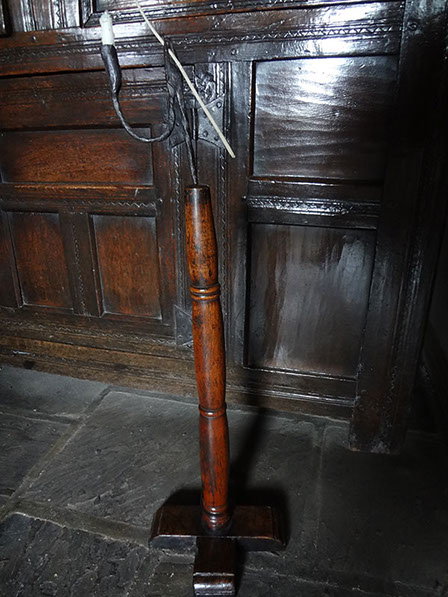
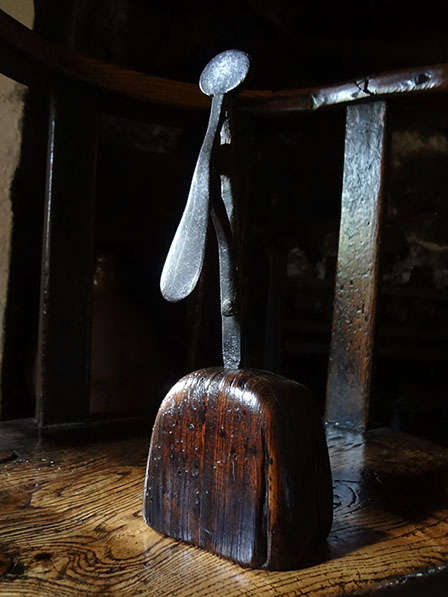
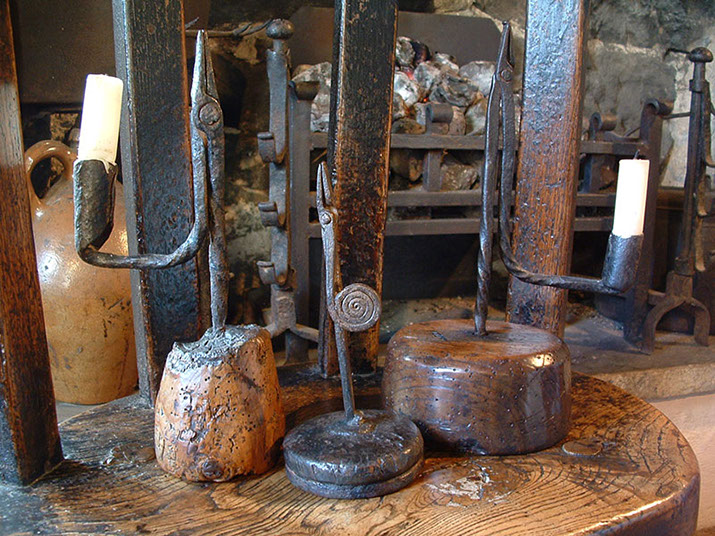
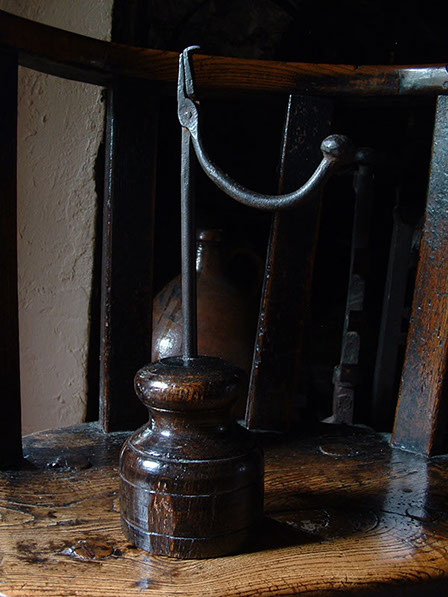
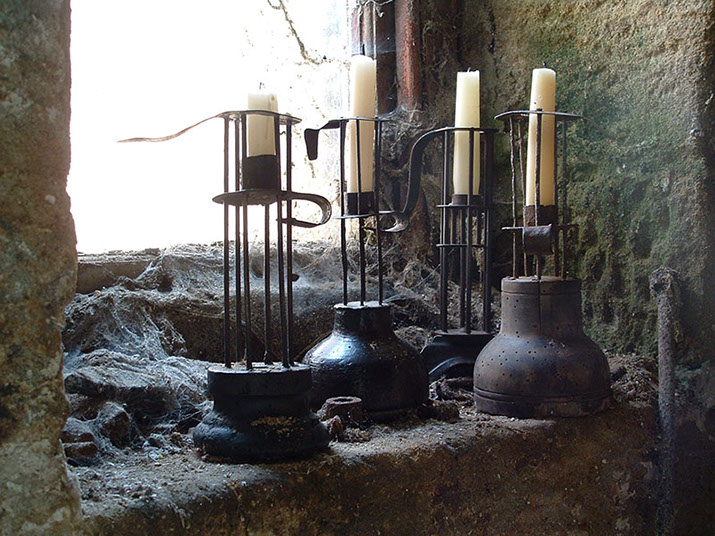
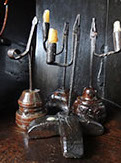
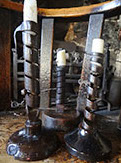
Values
Always difficult to be too specific, although French Spiral Candlesticks (Rat de Cave) represent excellent value and can still be purchased from £100 – often with Fruitwood bases as shown here. In the centre with a plain pine base an English example, (illustrated in Fire & Light) due to its rarity, would command a much higher price as most are French.
The other picture shows a selection of good 18th century Rushlights, these would cost well in excess of £500.
Below are several sold examples which were under this figure, apart from the Floor Standing version.
Plain metal tripod based examples may still be purchased at sensible prices while wooden bases are more sought after – although a replaced base does reduce the value significantly.
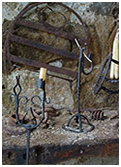
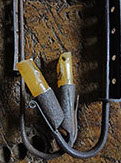
Country of Origin
The Candleholder/Peerman illustrated in Rushlight & Related Holders is described as French – the experienced dealer it was purchased from thought it was Irish. Evidence that it maybe of Scottish Origin exists, as a holder with the same metal work design is in the collection of the Edinburgh Museum - catalogued as coming from Banffshire.
In the middle is a good Irish example with a flat ringed base along with a French version.
The hanging Candleholders above show two very similar examples – the French version has a tight curl for decorative purposes where as the English one has a clip on the Candle Socket to hold a rush.
Below are a group of Birdcage / Stable Lights from the 18th & 19th century (Burgundy Region). The English example second from the left, again because of scarcity would be of greater value.
This is why country of origin is important.
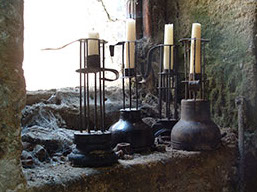
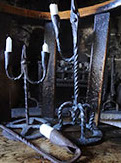
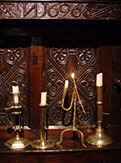
Authenticity
How do you know its Old? – A question frequently asked, even with experience it is not always easy – here are a few brief pointers which may help.
Above is a Loom Light style Candleholder. These have been on the market for many years, usually shorter in length and made of lighter gauge metal then the real thing.
In the same picture, Irish Rushlights which have been reproduced and often come onto the market at what appears to be a sensible price. I was emailed from America where there is concern among collectors of how many are now being seen over there.
The next picture shows a Brass Rushlight produced in Birmingham in the early 1900’s - of an 18th century style. These are quite easy to recognise as they are cast which makes the candle socket a lot thicker than one from the 18th century. There are also cast Iron versions from around this date, often quite crude in appearance. By the time these were made the Candle Tax had long been repealed in 1831 and Rushlights were almost a thing of the past - apart from in remote parts of the British Isles.







Website by Mill Creative